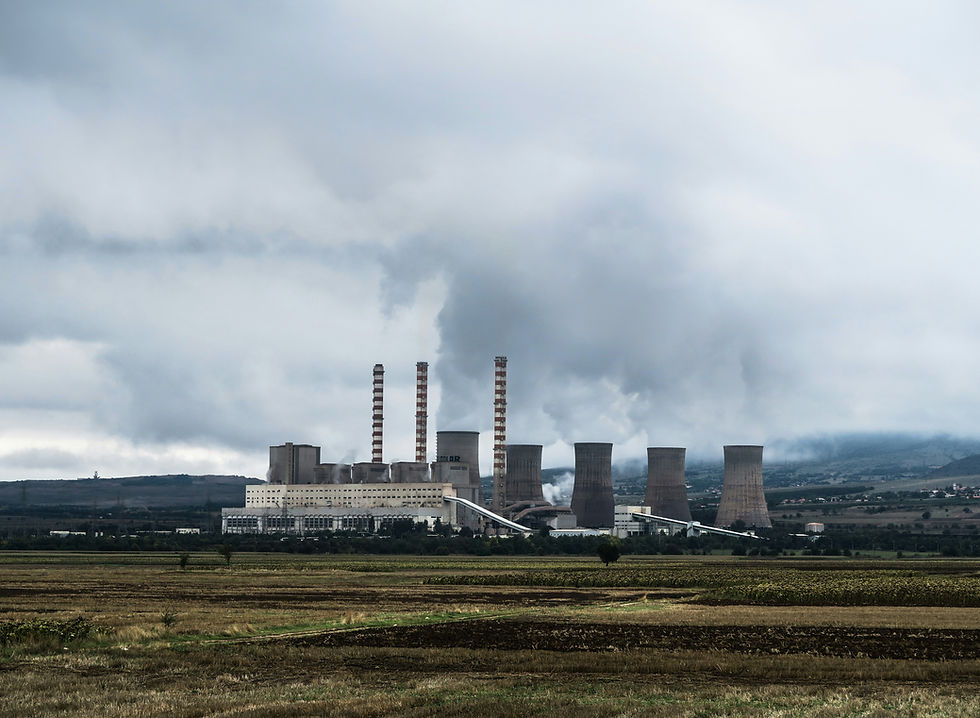The Future of Nuclear Energy: Innovations, Safety, and Sustainability
- Sankalp Agrawal

- May 30
- 3 min read
Nuclear energy has long stood at the intersection of promise and controversy. While it provides nearly 10% of the world's electricity and does so with minimal greenhouse gas emissions, debates surrounding safety, waste management, and costs persist. However, with new technological breakthroughs and increasing pressure to decarbonize our energy systems, nuclear power is experiencing a renaissance.
In this blog, we explore the innovations shaping the future of nuclear energy, how these advancements address past concerns, and what role nuclear could play in a sustainable global energy mix.

Why Nuclear Energy Still Matters
Unlike fossil fuels, nuclear power plants emit no carbon dioxide during operation. A single uranium fuel pellet—roughly the size of a fingertip—produces the same amount of energy as one ton of coal, 149 gallons of oil, or 17,000 cubic feet of natural gas.
With the world pushing for net-zero emissions by mid-century, nuclear is increasingly seen as a reliable baseload source that complements intermittent renewables like solar and wind.
Innovations in Nuclear Technology
1. Small Modular Reactors (SMRs): SMRs are compact, factory-built nuclear plants designed for rapid deployment and enhanced safety. Companies like NuScale and Rolls-Royce are leading the charge in developing these reactors, which can be scaled up or down based on demand.
2. Generation IV Reactors: These next-gen reactors promise higher efficiency, better fuel utilization, and improved safety. Types include:
Molten Salt Reactors
Gas-cooled Fast Reactors
Lead-cooled Fast Reactors Many of these designs operate at atmospheric pressure and use passive safety features.
3. Fusion Energy: Often referred to as the "holy grail" of clean energy, nuclear fusion replicates the process powering the sun. While still in the research phase, initiatives like ITER in France and startups like Helion Energy are making significant strides toward commercial fusion.
4. Waste Recycling: Advanced reprocessing technologies can reuse spent nuclear fuel, reducing radioactive waste and maximizing resource efficiency. Companies like TerraPower are exploring reactors that can run on depleted uranium or recycled waste.

Addressing the Safety and Waste Concerns
One of the main criticisms of nuclear energy is safety—fueled by historical incidents like Chernobyl and Fukushima. However, modern reactor designs come with multiple redundant safety systems, passive cooling mechanisms, and robust containment structures.
Nuclear waste, although a concern, is highly regulated and managed more systematically than waste from fossil fuels. Deep geological repositories like Finland's Onkalo are emerging as long-term solutions for safe waste storage.
The Economics of Modern Nuclear
While traditional nuclear plants are expensive and time-consuming to build, SMRs and modular construction aim to reduce both capital costs and project timelines. Additionally, public-private partnerships and government support (like the U.S. Inflation Reduction Act and the EU Green Taxonomy) are helping bring new projects to life.
Global Trends and Adoption
France: Leading the world with over 70% electricity from nuclear power.
China: Aggressively expanding its nuclear fleet to meet climate goals.
United States: Investing in SMRs and extending the lifespan of existing reactors.
India & Russia: Building new generation III+ reactors to bolster grid stability.
Future of Nuclear Energy

Nuclear energy will likely play a crucial role in achieving global decarbonization targets. While not without its challenges, innovations in design, safety, and waste management are reshaping perceptions of nuclear power.
At NRGIZED, we see nuclear not as a rival to renewables but as a powerful ally. A sustainable energy future may very well be one where solar panels and nuclear reactors work side by side.






Comments